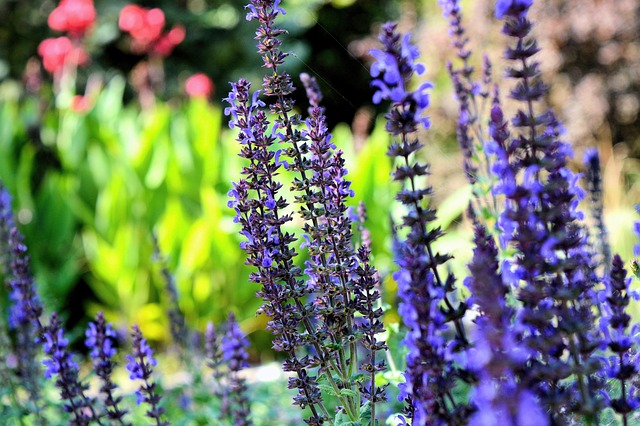A thriving vertical garden requires careful consideration of light exposure, watering frequency, soil composition, and seasonal adjustments to flourish. Optimal sun conditions can be found on south-facing walls for a majority of the day, while east- and west-facing walls offer specific morning and afternoon sunlight benefits. Plants should receive 6 to 8 hours of direct sunlight daily for optimal photosynthesis and vitality, which in turn allows for a diverse range of species to grow well within a vertical garden setup. Space utilization is critical; proper spacing prevents overcrowding, enhances air circulation, deters pests and diseases, and maintains the garden's aesthetic appeal. Tailoring watering schedules according to each plant's unique requirements—leafy greens and herbs needing consistent moisture while succulents and cacti require less frequent but more substantial hydration—minimizes waste and promotes plant health. A balanced soil mix that drains well yet retains moisture, enriched with organic matter, coupled with regular water-soluble and slow-release fertilization, ensures the garden remains nutrient-rich. Pruning maintains plant vigor and enhances visual appeal while preventing disease. Lastly, adjusting care according to seasonal changes, like increased watering in summer and frost protection in winter, helps maintain a healthy vertical garden year-round, making it both an attractive feature and a sustainable ecosystem.
Embark on a journey to transform your vertical garden into a lush, flourishing oasis with our expert guidance. This article delves into pivotal aspects of care, from optimizing sunlight and space utilization to tailoring maintenance to the seasons. Discover essential watering strategies, nutrient management techniques, and pruning practices that will ensure your wall garden remains vibrant all year round. Whether you’re a novice or an experienced gardener, these insights are designed to enhance the health and beauty of your vertical plantings.
- Optimizing Wall Garden Conditions: Sunlight and Space Utilization
- Watering Strategies for a Thriving Vertical Garden
- Nutrient Management: Soil Selection and Fertilization Tips
- Pruning and Maintenance: Keeping Your Wall Garden Vibrant
- Seasonal Adaptations: Tailoring Care to Temperature and Weather Changes
Optimizing Wall Garden Conditions: Sunlight and Space Utilization

When cultivating a vertical garden on a wall, optimizing conditions for your plants is paramount. The type of wall garden you have—be it a green wall or a living wall—will influence how you manage its care. Ideally, your chosen spot should receive ample sunlight, typically between 6 to 8 hours daily, to support photosynthesis and plant growth. South-facing walls are often ideal for this purpose, as they maximize sun exposure throughout the day. However, if your wall is on a different orientation, adjustments may be necessary; east-facing walls are great in the morning while west-facing walls perform well in the afternoon. Positioning your vertical garden to capture the right amount of sunlight is crucial for its vitality and the diversity of plants you can grow.
In addition to sunlight, space utilization is a key factor in maintaining a healthy wall garden. Proper spacing between plants ensures air circulation, which reduces the risk of fungal diseases and pest infestations. It’s important to consider the mature size of each plant species to avoid overcrowding. A well-spaced vertical garden not only promotes plant health but also enhances the visual appeal of your living wall. Additionally, efficient use of space can lead to a more productive garden, allowing for a greater variety of plants to coexist harmoniously. Regularly monitoring the growth and adjusting the spacing as needed will contribute to the overall success and longevity of your vertical garden.
Watering Strategies for a Thriving Vertical Garden

Maintaining a thriving vertical garden requires meticulous watering strategies to ensure each plant receives adequate hydration. A common mistake with wall gardens is overwatering, which can lead to root rot and stunted growth. To avoid this, it’s crucial to tailor your watering schedule based on the specific needs of the plants involved. For instance, leafy greens and herbs typically prefer consistently moist soil, while succulents and cacti thrive in drier conditions. A good practice is to water in the early morning or late evening to minimize evaporation and reduce the risk of fungal growth. Employing a drip irrigation system can automate this process, delivering water directly to the roots at a consistent rate. This targeted approach not only conserves water but also promotes plant health by keeping the leaves dry, which helps prevent disease.
The key to effective vertical garden care is understanding the unique microclimate created by your garden’s layout and the materials used in its construction. For example, dark-colored walls or those facing a prevailing wind can retain more heat than lighter ones, potentially affecting soil moisture levels. Regular monitoring of soil moisture with tools like moisture meters can inform your watering habits, ensuring each plant receives the right amount of water at the right time. Additionally, the placement of plants in relation to sunlight exposure should guide your watering frequency; sun-drenched spots will need more frequent hydration compared to shaded areas. By carefully observing and adjusting your watering strategies, you can cultivate a lush and vibrant vertical garden that flourishes year-round.
Nutrient Management: Soil Selection and Fertilization Tips

When cultivating a wall garden, the foundation of your plants’ health lies in the soil you choose and how you manage nutrients. Selecting the right soil mix is paramount; it should be well-draining yet retentive enough to hold moisture. A potting mix rich in organic matter can provide the ideal balance for most plants, ensuring that the roots have access to essential nutrients. To maintain a thriving vertical garden, regular fertilization is key. Opt for a balanced, water-soluble fertilizer tailored for container gardens, as it delivers immediate nutrition to your plants. Be mindful of the feeding schedule; over-fertilizing can lead to nutrient buildup, which may harm your plants. It’s also wise to use slow-release fertilizers periodically to supplement the routine feedings, providing a steady supply of nutrients that mimic the natural breakdown of organic matter in soil. This approach ensures that your wall garden remains lush and productive, with minimal risk of overfeeding or undernourishment.
Pruning and Maintenance: Keeping Your Wall Garden Vibrant

Pruning and maintenance are key to maintaining a vibrant wall garden. Regularly inspecting your plants for dead or diseased foliage can prevent the spread of potential issues, ensuring the overall health of the garden remains robust. When pruning, always use sharp, clean tools to make precise cuts, which encourage new growth and enhance the plant’s natural shape. This not only promotes a denser foliage, creating an aesthetically pleasing look, but also allows for better light and air circulation among the plants, which is crucial in preventing fungal diseases that thrive in moist environments.
Maintenance of a wall garden extends beyond pruning; it involves consistent watering, appropriate to the climate and specific plant requirements, and the strategic placement of plants to maximize sunlight exposure. Fertilization should be tailored to the individual needs of each species within your vertical garden, as over-fertilizing can lead to nutrient buildup in the soil, potentially harming your plants. Regularly checking the pH balance of your soil can help prevent such issues, maintaining the optimum conditions for healthy plant growth and a lush, thriving wall garden.
Seasonal Adaptations: Tailoring Care to Temperature and Weather Changes

Maintaining a vertical garden, or wall garden, involves attentive care that adapts to seasonal fluctuations in temperature and weather patterns. As temperatures rise, plants require more water to prevent wilting and to support photosynthesis, which thrives in the warmth. Conversely, during cooler months, it’s crucial to protect your vertical garden from frost by insulating the area with materials like bubble wrap or burlap, as this can preserve the health of your plants and encourage them to continue growing. Additionally, adjusting the position of your wall garden to receive optimal sunlight throughout the day is essential for photosynthesis, thereby maintaining the vitality of your vertical garden year-round. Regular monitoring of soil moisture and adjusting watering schedules in response to seasonal changes ensures that your plants receive the appropriate amount of hydration without risk of overwatering or underwatering. These practices not only enhance plant health but also contribute to the sustainability of your vertical garden ecosystem, allowing it to thrive regardless of the season.
In conclusion, a well-maintained vertical garden can be a lush and productive addition to any space. By carefully optimizing conditions such as sunlight exposure and space utilization, you set the stage for your wall garden’s success. Watering consistently with tailored strategies ensures that plants receive the hydration they need without overwatering or underwatering. Nutrient management through thoughtful soil selection and regular fertilization keeps your greenery thriving. Pruning and diligent maintenance are key to maintaining the vibrancy of your vertical garden year-round. As seasons change, so too should your care techniques to adapt to varying temperatures and weather patterns. With these expert tips in hand, your vertical garden will not only enhance the aesthetics of your wall but also contribute to a healthy and sustainable environment.
